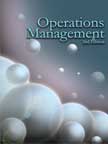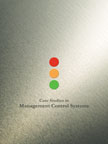Operations Management
 |
Details
Textbook:
Pages : 329;
Paperback;
210 X 275 mm approx.
Workbook:
Pages :
239; Paperback;
210 X 275 mm approx, Sample Applied Theory Questions
Courier charges extra
Pricing
Textbook Price: Rs. 900;
Workbook Price: Rs. 700;
Available only in INDIA
Detail Table of Contents
Click below to view
HTML
Purchase Management : Chapter 11
SUMMARY: Purchase departments buy raw materials, parts, machinery, and services used by production systems. The objective of purchase management is to procure the right equipment, materials, supplies and services in the right quantity, of the right quality, from the right suppliers, at the right time, at the lowest price. While the value of purchased items varies from industry to industry, it adds upto more than fifty percent of sales in all industries. Purchase management is regarded as a significant activity in many organizations because of the high cost involved in carrying out purchasing activities, increasing quality benchmarks, and increasing global competition. Purchase activities can be organized by using two basic approaches: centralization and decentralization. Many manufacturing organizations use a blend of these two approaches to organize their purchase activities. |
|
The purchase manager, who heads the purchase department, is responsible for developing vendor networks, selecting suppliers, negotiating contract terms and conditions with suppliers, and ensuring the timely delivery of the required supplies. Whenever a new item is indented, the purchase manager must determine whether to make the item in-house or buy the item from external vendors and suppliers. Many people are of the opinion that the employees working in the purchase department are corrupt because the regular activities of the department involve huge sum of money. Organizations should therefore develop guidelines on ethics for employees in the purchase department.



